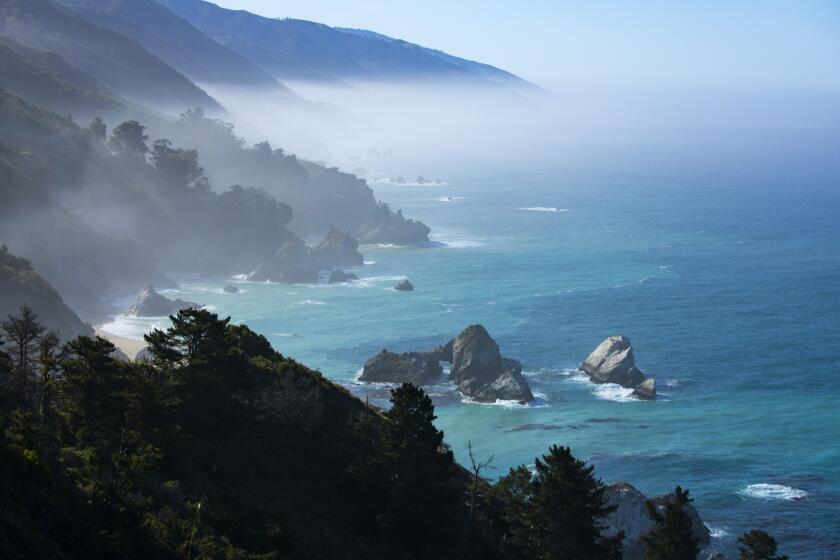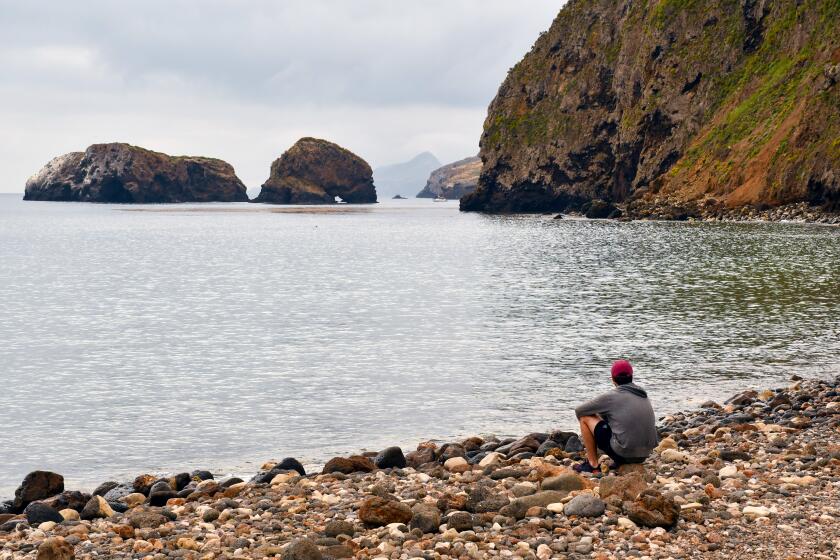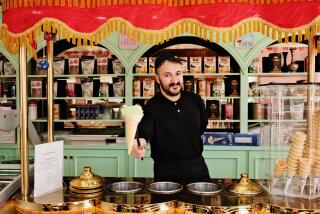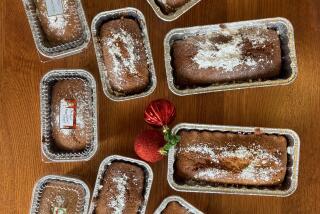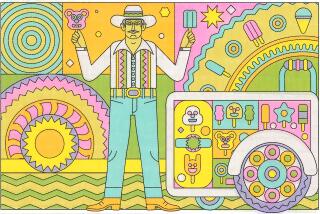Fireworks? My mom’s homemade ice cream was the real star of the show on 4th of July
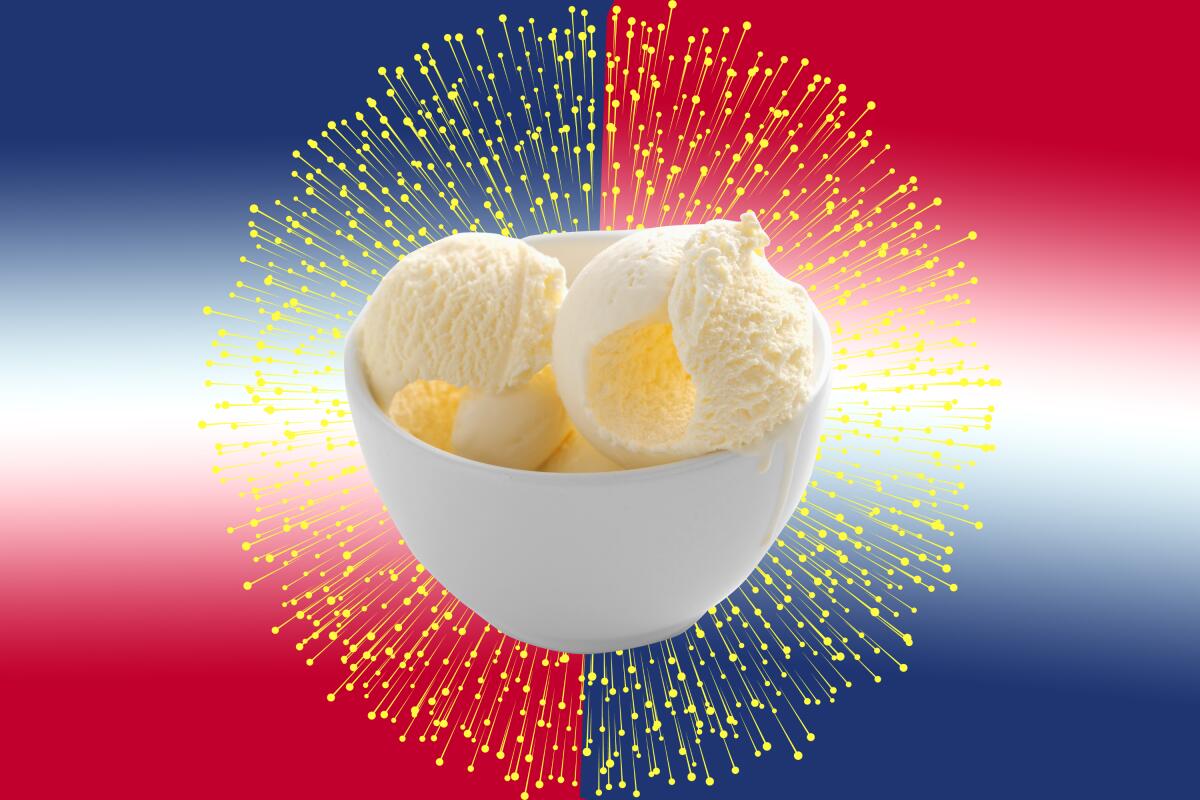
When I was a kid I used to love the Fourth of July, when it revolved around celebrations with sparklers, Pop-Its and the best homemade ice cream and not the monthlong fireworks bombardments that make neighborhoods today sound like a war zone.
I live in Ventura now, and so far no one near me has felt the need to set off window-rattling, anxiety-stoking fireworks every night in June. That wasn’t the case in my old neighborhood in Riverside, a midcentury suburban neighborhood with wide, tree-lined streets, charming families and closet miscreants who unleashed their arsenal in a maddening two or three booms a night, no matter how high the fire danger or late the hour.
So over the past few years, Independence Day for me has become less about celebrating family and nation and more about enduring the selfishness of jerks who believe they have the right to disrupt our peace and endanger our world whenever they choose.
Grumpy? Yeah. And I know it’s happening all over Southern California, based on the comments I’ve heard from friends and family.
Get outdoors for the first major holiday since California relaxed COVID-19 rules
It’s not the way I remember things when I was growing up Riverside.
We’re talking olden days here, before internet and mandatory seat belts. In those days, the best our parents would permit in the way of noisemakers was the mesmerizing sizzle of sparklers or a box of bang snaps that you hurled as hard as you could at the ground to make a satisfying crack! They were annoying, which made them wonderful, but they also lasted just a few minutes before we’d used them all up, leaving little black smears on the sidewalk.
Mostly, the Fourth was about anticipation. Waiting to see my cousins, who lived up in Oakland and only visited once a year. Waiting for dark to see the city fireworks display that we had to watch in our jammies, because we always fell asleep on the short drive home.
And waiting, waiting for my mom’s ethereal homemade ice cream to make its miraculous transformation from a foamy fragrant cream to a frozen treat so sweet and fragile it began to melt the moment it was exposed to air.
Follow these tips to dozens of parks, beaches and trails. See cool images from Yosemite. Test your California savvy. And surprise your dog.
Of course, Riverside’s air on the Fourth of July was always hot, hot, hot. But that was the way things were supposed to be in July, and we’d dress accordingly — in light cotton short sets and flip-flops to keep us cool.
My parents worked as a tag team on the Fourth. My mom would pull out her biggest bowl and start mixing the ingredients for her ice cream in the morning — whipping the eggs and sugar with her droning handheld mixer and then slowly adding the milk and cream until it threatened to spill over the top of the bowl. And my dad — the outside man — prepped the barbecue, washed the crusts of salt and dust out of the wooden ice cream maker, and then went to pick up ice and rock salt at the ice house on the other side of town.
In those days, you could buy ice in brown, thick paper bags taller than my little sister. We’d ride in the back of our red Chevy station wagon, where we could sprawl out and have a few sisterly tussles, with the windows down and hot air flipping our hair around like tumbleweeds.
Once we arrived, we’d wait outside, leaning against the car and feeling the heat from the asphalt rise up through our flimsy flip-flops, until the burly men at the ice house loaded two big bags of ice into the back.
Then we’d climb in and lean against the icy bags on the ride home, sucking on pieces of rock salt and staring out the back, hoping to see an exotic VW Bug.
At home, my dad would assemble the mixer — a wooden bucket and hand crank — and my mom would carefully pour the creamy mixture into the silver canister that went inside. She inserted the paddle, pressed down the lid and then the work would begin, my dad turning the crank continuously while the kids stuffed pieces of ice and layers of salt around the sides.
It seemed to take forever, the cranking and the ice melting and having to be replaced. The salt somehow made the ice colder, something I never really understood then or now, but we knew the ice cream wouldn’t freeze unless we created that salty slush around the sides.
Of course we always wanted a turn at cranking the handle, but it usually took just a few cranks for the kids to get bored and wander away, to pry fat hornworms off the tomato plants or chase the tiny skipper butterflies that were omnipresent in our yard, holding them carefully in our cupped hands to marvel at their tiny perfection.
We never went too far though because dad always needed more ice and salt, the turning could NEVER STOP and none of us wanted to miss the most important moment of all, when the cream magically got so firm he couldn’t turn the handle anymore.
These fireworks-free ideas are all about calm, and some are about patriotism too.
Then all the quiet was shattered. My dad would shout to my mom, who would come running with a platter and rubber spatula, and all the kids would crowd around. Speed was critical at this stage. If you waited too long, you couldn’t pull the paddle out of the ice cream because it got too hard. But if you kept the canister open too long, the delicate ice cream inside would revert to liquid.
My mom was a pro. She’d carefully scrape the ice cream off the paddle back into the canister — ignoring the moans of the children who were desperate to lick the paddle. Then she put a thick layer of plastic wrap over the top and pushed the lid back in place and my father would bury the canister in the icy brine, cover the top with more ice and an old burlap bag for insulation, and finally balance the remaining bag of ice on top, for additional coolness.
We didn’t pay much attention to that part, because by then my mom had set the platter before us, with the remaining ice cream on the paddle already melting into puddles on the plate. We’d each get a spoon and descend like vultures, slurping as much as we could of the half ice cream-half liquid and ultimately licking the paddle clean.
Later, after our dinners of barbecued hamburgers or steaks, we’d each get a bowl of ice cream, sometimes with cut strawberries or peaches, but it wasn’t as transcendent as those first bites from the canister. By then, the texture had changed. It was still delicious, but icier and less special.
4th of July events are back in Southern California as the state reopens.
And although we always kept the remains in the freezer to eat another day, bringing the ice cream inside always spoiled it somehow. It became rock hard in the freezer and lost its lightness. It still tasted OK, once you scraped out enough to go in a bowl, but it rarely felt worth the effort.
Later, my dad would get an electric ice cream maker, which saved his cranking arm but added a droning whine to our festivities and still required constant vigilance, since the motor would burn out in a moment if you weren’t there to unplug it when the cream froze.
When we cleaned out my parents’ house we found three old electric ice cream makers gathering dust in the garage, their motors long gone but still too good to throw away. I never found the hand-crank model. Some lucky person probably bought it years ago at a garage sale, but truth be told, it was looking pretty rusty when I was a kid, so maybe it just finally fell apart.
It’s hard to find those old hand-crank ice cream makers today. One that gets decent reviews on Amazon is the Elite Gourmet Old Fashioned Appalachian ice cream maker, which has a hand crank and a motor.
In case you dig around in the garage and find your old maker, here’s my mom’s foolproof recipe (and I say foolproof because I was able to make it come out right too):
Edna Marantos’ Perfect Homemade Vanilla Ice Cream
4 eggs
2 ½ cups sugar
10 cups half-and-half
3 ½ tablespoons vanilla
½ teaspoon salt
Beat the eggs until light. Add the sugar gradually, until the mixture thickens. Add the rest of the ingredients, scraping down the sides of the bowl so everything is mixed well. This fills a 4-quart canister. For fruit lovers, add a cup or so of fresh (and unsweetened) strawberry or peach puree and mix well.
NOTE: This old recipe calls for uncooked eggs. If you are worried about salmonella, use pasteurized eggs or cook the mixture over low heat until it reaches 160 degrees. Then cool it down before you start the freezing process.
More to Read
Updates
1:06 p.m. July 23, 2021: An earlier version of this story said the writer found the Elite Gourmet Old Fashioned Appalachian ice cream maker for a discounted price on the website Smartver. That website has since gone offline and PayPal told the L.A. Times it is investigating fraud claims against the site.
Sign up for The Wild
We’ll help you find the best places to hike, bike and run, as well as the perfect silent spots for meditation and yoga.
You may occasionally receive promotional content from the Los Angeles Times.

